Every time I go to Chantal’s studio we eat cupcakes from Hummingbird Bakery, get hopped up on sugar and talk very fast. We met because she read my book The Lonely City and asked if I’d come and sit for her. I feel like we made friends as soon as I walked through the door. She says she’s shy, but she’s one of the most open, engrossing talkers I know. It feels like we both use portraiture to get at something deeper, and that I get a better sense of what that might be by way of our sprawling, rapid-fire conversations.
How do you catch reality, the actual minute? I wanted to see what would happen if I wrote about her while she was painting me, if we could survey each other at the same time in an act of simultaneous witnessing.
Chantal’s studio is on the second floor, overlooking a courtyard. There were nine versions of her face leaning against the back wall. She’d been painting one each evening. They looked excoriating to me, but she pointed out their subtle flattery. It isn’t easy to really set down what you see. It isn’t easy to see at all.
There were people all over the room, looking back at us or turning delicately away. A head of Jay-Z, in an expensive black overcoat and blue shirt, the planes of his face very quick and sure, caught in a moment of consideration, of intensely private thought. Four versions of a teenage boy, naked to the waist. In each he was reticent, careful, folded in on himself. It was a painting of a person, and also of a moment in time, adolescence from the view of the middle-aged, regarding a creature as fresh and inviolate as a butterfly, a fawn. One of his ears stuck out pinkly. His mouth was exquisite, a warm smear. The facets of his face fell in lavender shadow. I’m obsessed with Chantal’s mouths, the tenderness of them, the declivities around lips, the dashed depression beneath the nose.
Before we started, I prowled around sockless, getting pastel dust on my soles, itemising the detritus. An orchid, a pair of rubber gloves, a kitchen roll smirched with pink. There were scribbled notes all over the white walls, graffiti I’ve watched spread month by month: F. Bacon; Prussian blue; Rimbaud; I am always; My stringbean. Chantal’s palette was covered in fat worms of yellow, ochre, scarlet, black. A painting of a baby was propped against a table leg. It lay on its back, a gender-indeterminate frog. The greenish, aquatic colour of the blanket made it look as if it were floating in amniotic fluid, a snapshot from the womb.
It was snowing. The light kept shifting, one minute a blizzard, the next full sun. There were several huge canvases, primed with pink or green ground. They cast their own light too, glowing weakly like drugstore neon. It was snowing so hard the sky went green. The air was completely full of snow.
Painting is a high-wire act, especially if you’re making portraits from a model. They can’t see what you’re doing, but they can see you doing it, six brushes in one hand, leaning in and out, stealing long looks, maybe stalling, maybe running catastrophically aground. It’s a negotiation, an exercise in consent. They give themselves up, hoping you’ll see them at their best, revealing the beauty they’re sure they contain. It’s sort of like being a hairdresser, Chantal said. That’s what it means to be a painter, you watch the person depart. And then: Stop looking! You can’t! No!
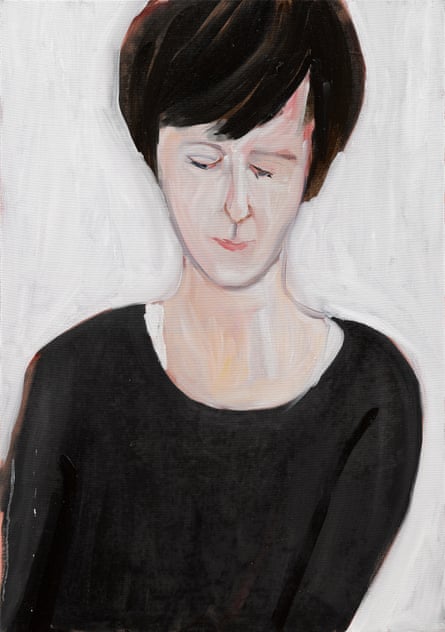
I recognise the people in Chantal’s pictures; sometimes I know them. But a person is not stable. For a start there’s such a gap between what people look like and who they are. It isn’t easy to catch the essence, what Chantal described Baconishly that afternoon as “the deadly real of the them”. The first time she painted me I felt like she’d caught something I didn’t want to see, a kind of anxiety about being looked at that manifested in muscular tension, a rigidity around the mouth, something masklike and hurt. I could see my own withdrawal, and it was painful to regard.
Later she told me that when she first paints someone she can barely pluck up the courage to look at them, that sometimes she is painting the familiar contours of her own face, or projecting moods into other women’s bodies. This conversation fascinated me. It opened up a new door into Chantal’s work. It was the sense of slippage between artist and subject I liked, the admission that perfect objective looking is an impossible act. You can’t paint reality: you can only paint your own place in it, the view from your eyes, as manifested by your own hands.
A painting betrays fantasies and feelings, it bestows beauty or takes it away; eventually, it supplants the body in history. A painting is full of desire and love, or greed or hate. It radiates moods, just like people. That afternoon Chantal told me about painting a friend whose immense beauty was located in her vivacity, her force of presence. The painting she made was accurate, it rendered the features, but the person she’d been looking at had evaded her completely. When she told me that story she was excited. Something had been there, in the room. It hadn’t been caught.
Women are always wrestling with their faces. Imagine going through life being so dependent on the arrangement of gristle and eyeballs, cheekbones and pores. It’s all sagging and slipping, it’s so difficult to inhabit, so dismaying to regard. I know Chantal is besotted by beauty, but what she defines as beautiful isn’t the same as the fashion magazines. It’s the actual instant, the shifty, wriggling person inside their hapless, gorgeous suit of flesh. I think this is why I love to look at her paintings of women. What’s beautiful to me is the intensity of her regard. It’s like she scrapes off some sort of toxic outer layer, a blank plastic. She allows her sitters to possess themselves, to be lovely, idiosyncratic, intelligent, mortal, their eyes wide, wrapped in a daydream or looking boldly back.
She didn’t like what she was painting. She got three sheets of paper and took three quick layers off, leaving pallid impressions of my face scattered on the studio floor. We were talking very fast. I had my laptop in my lap. We talked about Alice Neel and Peter Doig, we talked about underpants and bellies. We talked about Francis Bacon throwing paint at his canvases. Chantal said: “He was trying to get in by a different door.”
We talked about Diane Arbus, Francesca Woodman, Lucian Freud. We talked like fishermen musing over catches, puzzling over rods and casting techniques. We laid out pictures like silver fish: look at this, yeah but look at this! Over on the other side of the room I could see Jay-Z, his stately face. Chantal got out a catalogue and showed me six or 10 Holbeins and Van Dycks. Paint as fur, as velvet, as brocade, as hair. Paint as a way of entering and becoming someone else. Paint as a device for stopping time.
The snow made everything very dreamy. We stopped and ate our cupcakes. The air smelled of burnt dust. I got up and walked around the room. My face was on the easel, a little sugared almond, surrounded by soft white light. My eyes were looking down. I was caught in the act of trying to get her, as she was caught in the act of trying to get me. We were there, is what I’m trying to say. The sun came out, my phone rang. Something was snagged, a hundredth of an aspect of somebody. Already we’d moved on. Art is the residue, the bit that lasts.
Olivia Laing is the author of To the River, The Trip to Echo Spring and The Lonely City. Her debut novel, Crudo, featuring Chantal Joffe, is published by Picador (£12.99) on 28 June. Chantal Joffe: Personal Feeling Is the Main Thing is at the Lowry, Salford, 19 May–2 September. The accompanying book is published by Elephant Publishing and Victoria Miro (victoria-miro.com), £35
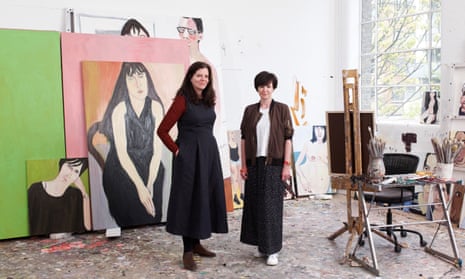
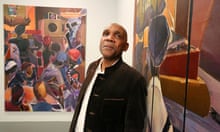
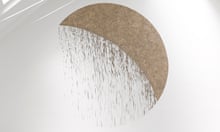
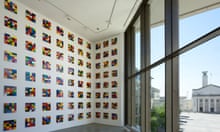


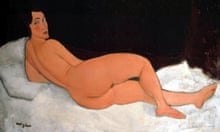

Comments (…)
Sign in or create your Guardian account to join the discussion